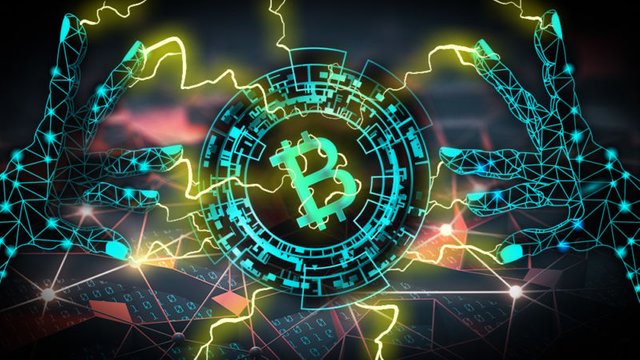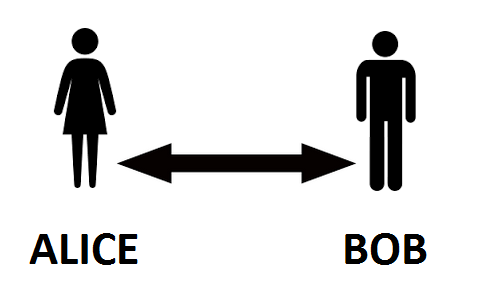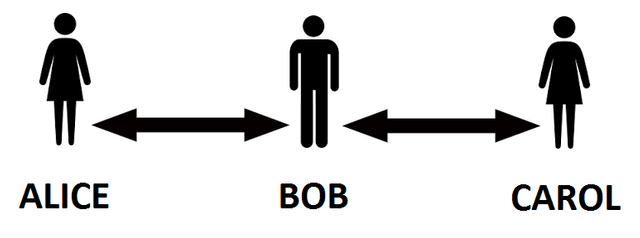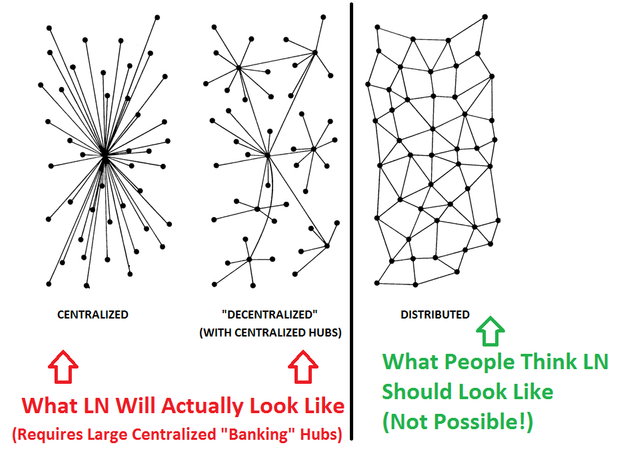
Have you heard of the Bitcoin Lightning Network? It is a proposal that has been implemented in Bitcoin network and now it is in Beta Stage.
Is the reason why Bitcoin network didn't had a 2MB or 4MB upgrade in order to scale and instead this proposal by 2 private companies Blockstream Inc. and Lighting Labs Inc. has been pushed hard into Bitcoin's code.
They said it was a solution for scalability without "centralization".
Using a network of these micropayment channels, Bitcoin can scale to billions of transactions per dayBut it was all a lie, when in their own proposal centralization has it is own role.
What it doesn’t tell you is that this can only be accomplished by using large, centralized “banking” hubs.
Many in the Bitcoin community mistakenly assumed or were led to believe that the Lightning Network (LN) would be a distributed peer-to-peer network.
However, this is infeasible. In fact, even using a generous set of assumptions, we will prove it is mathematically impossible.
57 Bitcoin “Core” developers have signed their support to an official Capacity Increase Roadmap that advocates the Lightning Network as a “non-bandwidth scaling mechanism” that may provide “very high decentralization”.
We disagree and will prove it does not. After reading and understanding the information here, we recommend you draw your own conclusions.
What is the Lightning Network and How Does it Work?
Lightning Network (LN) is a protocol allowing for a series of off-chain bidirectional payment channels.
“Bidirectional” simply means two directions, so Alice and Bob could open up a private channel and send bitcoins back and forth (outside of the blockchain)

In order to open the channel, one or both parties have to deposit bitcoins into a Special Bitcoin Address. After that, they can do as many transactions as they want inside the channel, until either of them decide to close it, which settles (pays out the appropriate final balances) on the main Bitcoin blockchain.
Going one step farther, if Alice had a channel with Bob, and Bob also had a channel with Carol, then Alice could indirectly send money to Carol: Bob would first pay Carol, and then Alice would reimburse Bob.

The Mirage Network
LN evangelists promote the idea that if Alice can pay Carol through Bob, we should be able to keep extending this idea to build an entire network of payment channels, thus allowing a large percentage of transactions to occur off-chain.
However, this cannot be realistically accomplished as a peer-to-peer network, at least not one of any significant size.
“Decentralized” Vs “Distributed Centralization”
In everyday talk about Bitcoin, most people say “decentralized” to mean what is technically a “distributed topology”.
Conversely, a network with centralized hubs can technically be called “decentralized” if it doesn’t have a singular center.
But let’s not get caught up in word games. The diagram below should clear things up:

Lighting Network Cannot Scale
It starts off like a basic math problem. We’re going to assume the goal is to scale to one million users.Let’s think about this: If you have a tree with 10 branches, and each of those branches has 10 leaves, you can reach 100 leaves.
And if you have a tree with 10 branches, and each has 10 sub-branches, and each of those in turn has 10 sub-branches , etc… you can go 6 levels “deep” and get: 10 x 10 x 10 x 10 x 10 x 10, or simply: 10⁶, which equals one million.
Since you have to hop from branch to branch 6 times to reach the leaf, we can say we have “6 hops”. So that’s 10 branches with 6 hops, or in our case: 10 channels with 6 hops.
So, what’s the challenge? Your Money Can’t Be In Two Places At the Same Time
Known Lighting Network Issues- Peer failures: If one of the peers is unresponsive, users might have to wait for hours to close a payment channel and resend the funds via an alternative route
- No Offline Payments: Users can’t pay someone who is not online
- Not ideal for large payments: Even though a route via various payment channels might exist, the funds in the peers multi-sig wallets might not be sufficient to transfer large funds
- Centralization: The Lightning Network might encourages centralization in payment hubs (similar to miner centralization)
- Easy too lose your Bitcoins into a central hub.
As the network reaches a million users, it seems there will be no realistic way to avoid these problems. Dividing funds into many channels and continually loaning out money both make the network unusable.
The only conceivable visions are either A) everyone deposits MUCH much more than they need to transact with, or B) the system depends on large centralized hubs.
Neither is a decentralized scaling solution, or even a major part of one.
Remember, Bitcoin must be decentralized. Be wary of the rationalization of “Centralization is ok as long as the base layer is kept decentralized.” That is an insidious trap which allows forcing users off the base layer and into the centralized systems. We must never allow that.So, is Bitcoin in trouble because second layer solutions may not work? No, not at all. Bitcoin was designed to scale on-chain with simple blocksize increases. It can and will do so, if we allow it.
Posted from my blog with SteemPress : https://247cryptonews.com/bitcoin-lightning-network-a-total-failure-by-lighting-labs-blockstream/